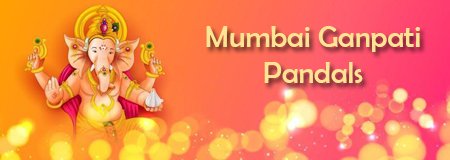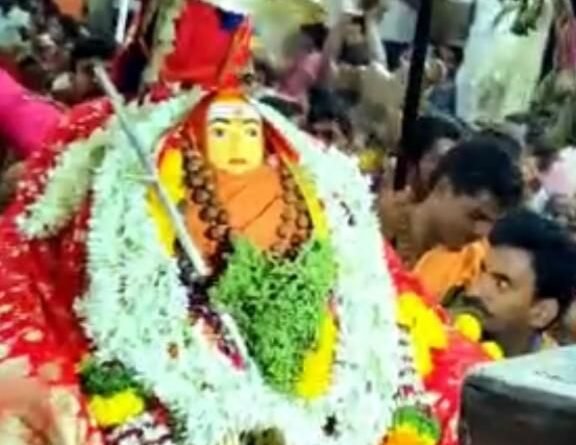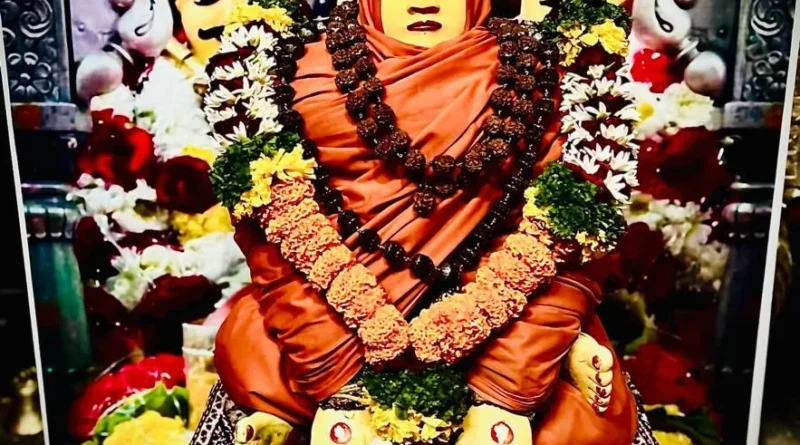Avadoot Chintan Jai Gurudev dutt Gangapur
Avadoot Chintan Jai Gurudev dutt Gangapur
Story of Avdhoot Chintan Shri Gurudev Datta
“Sarva Aparadha Nashaaya
Sarva Papa Haraya Cha |
Deva Devaya Devaya
Sri Dattatreya Namostute ||”
Dattatreya, or Shri Datta, as he is also referred to, is a Hindu deity who is also regarded as an aspect of the Divine Trinity or Trimurti of Brahma, Vishnu and Maheshwara. The name “Dattatreya” is derived from two Sanskrit words, Datta (which means “given”) and Aitreya (which refers to the sage Atri, who was also Datta’s biological father). In the Nath tradition of Hinduism, Dattatreya is considered to be an avatar or reincarnation of Lord Shiva and is revered as the Adi-Guru or the First Teacher of the Adinatha Sampradaya of the Nath sect of followers.
Shri Dattatreya first emerged as a teacher of Yoga, with clear Tantric traits. But later, he was accepted and absorbed into many other cults and sects, even including the more conventional Vaishnavism. He is also considered more of a God today, than a teacher. Today, this deity is worshiped by a multitude of Hindus from all walks of life, spanning the entire globe. Shri Datta is believed to be the author of the Tripura Rahasya, a treatise on Advaita Vedanta, which was given to Parashurama. Lord Dattatreya’s birthday is celebrated in a big way as Dattatreya Jayanti.
Shri Dattatreya is regarded as one of the most ancient deities. The earliest references to him can be found as far back as in the Ramayana and the Mahabharata. The Dattatreya Upanishad, which is part of the Atharva Veda, describes him as variously taking the form of a child, a madman and even a demon, in order to help his followers attain moksha (liberation) from the material world. In the earliest Tantric traditions, this deity was portrayed with only one head. Gorakshanath was responsible for including Shri Datta in the Nath Sampradaya and giving the deity a socially acceptable form today. The current three-headed form of Guru Shri Datta was probably introduced in the last 900 years or so.
Shri Data was born to sage Atri, who had been granted a boon by Lord Shiva that he would be born in their household, to the sage himself. Lord Shiva or Parameswara, being part of the Trinity, Dattatreya automatically becomes an aspect of the Trimurti. Yet another legend of Datta’s birth suggests a rather mystical origin of this deity. Some sources believe that he was born in the jungles of Kashmir, very close to the holy Amarnath.
Young Datta left his home at a very tender age, to roam naked in search of the Absolute One. He wandered around Gujarat, Maharashtra, North Karnataka and Andhra Pradesh. He is believed to have attained enlightenment in a town in Karnataka, known as Ganagapur. It is also said that his original footprints can still be seen in a lonely peak at Girnar. Even the treatise Tripura Rahasya refers to Parashurama finding Dattatreya meditating on a peak on the Gandhamadana Mountain.
Three of Dattatreya’s closest disciples were kings. While one of them was an Asura, the others belonged to the Kshatriya (warrior) clan. Dattatreya was at first regarded as an avatar of Shiva. But later, Vaishnavite claimed that he was an avatar of Vishnu. But many Hindus regard both Shiva and Vishnu’s as two aspects of the Absolute Brahman. Hence, he went on to identify with the Trinity themselves. Interestingly, the Dattatreya Upanishad first introduces him as being one with Vishnu and ends with the mantra, “Om Namah Shivay”, thereby also identifying him with Shiva. Towards the end of the third chapter, it says that Shiva pervades all reality and resides as the Eternal Jyoti (Divine Light) in the heart of every man. Shiva is described here as being omnipresent and omniscient. Finally, the chapter closes with the description of Shiva as of being that of Dattatreya.
In the Dasham Granth, Guru Gobind Singh describes Dattatreya (Datta Muni/Datta Dev) as being the incarnation of Rudra, the Supreme Power. This treatise also narrates the entire life story of Datta. Appearance of Dattatreya. Shri Dattatreya is portrayed in different ways in different traditions among the Hindus. However, the most commonly portrayed image as having six hands; the lowest two hands holding a Mala (garland) and a Kamandalu (water pot). The middle two hands are shown holding the sacred Shankha (Conch) and Chakra (Discus). Occasionally, portraits also show him holding the Gada (Mace). He is also shown as accompanied by 4 dogs and a cow.
Significance of the Form of Lord Dattatreya: Dattatreya is shown having 3 heads and a form that resonates peace and serenity. In the present Kali Yuga, it is only through pure, divine love, that one can go beyond just being poised and actually attain that type of calmness and serenity. Only those extremely Dharmic (righteous) can follow the fourfold path of Yoga and go ahead to discover the Absolute Truth. Guru Datta radiates that very love and compassion, thereby emanating that peace and love from his person.
The 3 heads of Shri Guru Datta are said to embody his identity as the Devas of the Trinity, namely, Brahma, Vishnu and Shiva. He is also the one who has transcended the 3 qualities or the Triguna and is one with the Sublime Energy of the Absolute Guru. This is why he is also regarded as the Teacher or the Divine Guru. Sri Dattatreya’s 6 Hands: Dattatreya is most often shown as having 6 hands, each holding the Shankha, the Chakra, the Gada, the Trishul (Trident), the Kamandalu (water pot) and the Begging Bowl. Mentioned below is the significance of each of these items:
The Shankha: The Shankha or the Conch is the one that resonates with the Naada, the divine sound. “Sam” and “Kham” together stand for Jupiter and Saturn. Saturn stands forms the basis of knowledge spiritual expansion, which is ultimately bestowed by Jupiter. Likewise, the teacher too is responsible to first awaken the need for gaining knowledge in the student and then helping him or her seek extensive training to achieve the same.
The Chakra: The Chakra, the Discus or the Wheel stands for time or the Kalachakra. The teacher presides over this factor too, by training the student to gain knowledge regarding the time factor, also teaching him to adapt equally to both good and bad times in his life, without getting affected by either. Developing a sense of timelessness leads the follower to Ananda or bliss.
The Gada: The Gada or the Mace is symbolic of pride. Pride has to be sacrificed in order to walk the path of the Truth. Dattatreya leads his followers with love and compassion, gently nudging them when they err from the path of Dharma, reminding them to put down their pride and develop love and compassion for other being, thereby experiencing spiritual enlightenment. The Mace also symbolizes the inverted form of the cerebro-spinal system in our bodies. Guru Datta holding the mace indicates him reversing human conditioning, to free the devotee of his ignorance, finally leading him toward enlightenment.
The Trishul: The Trishul or the Trident symbolizes the triple energies of Ida, Pingala and Sushumna, which are contained in a subtle form within the Brahmadanda. The Ida at the left, gives right to materialization; the Pingala at the right, to spirituality; and the Yogic Sushumna, being the central energy current, works to balance out both these right and left energies. Datta holding the Trident, represents the promise he makes to his followers, to balance out their energies in a way that helps them lead the best life possible, in terms of material pleasure as well as spirituality.
The Kamandalu: The Kamandalu or the little water pot indicates that Guru Datta is, in fact, the life carrier. He bestows a good and long life on the student, so that it can aid him in his spiritual journey; his journey along the Path of the Truth. The Master breathes this life-force into his student, thereby helping him perform his daily Yogic practices, finally raising his Kundalini and giving him the moksha that he seeks.
The Begging Bowl: Finally, the begging bowl that Datta holds; signifies that he begs followers to donate their ego, limitations, pride, negativity, evil thoughts and sickness to him, thereby enabling them to be free of the same. Guru Dattatreya then drinks down this “poison” and helps his bhaktas be liberated from all forms of negativity and evil, thereby putting them more firmly on the path toward enlightenment. Incidentally, Lord Shiva is also sometimes portrayed to be carrying a begging bowl for the same reason.
Avatars of Dattatreya : According to the book “Shri Dattatreya Shodashavatar Charitanee”, Guru Sri Datta took 16 avatars or manifestations, which are as follows: Yogiraj. Atrivarad. Dattatreya. Kala Agnishaman. Yogijan Vallabh. Lila Vishwambar. Siddharaj. Dnyanasagar. Vishwambharavdhoot. Mayamuktavadhoot. Mayayuktavadhoot. Adiguru Shiva Guru Dattatreya Devdeveshwar Digambar Sri Krishna Shyam Kamalnayan
Avadhuta Gita: According to the Nath Sampradaya, the Avadhuta Gita is a work compiled from the words uttered by Dattatreya, which had been transcribed by his two disciples, Swami and Kartika. Even greats like Swami Vivekananda are said to have held this book in high esteem. Some of the ideas in this treatise is similar to Shaivite philosophy, Vaishnavite Agamas and Buddhist Tantra as well.
Sadguru Dattatreya. He faced lot of tests by Guru Dattatreya, but he did not leave him and lastly Sadguru burns both hands of Karthivir Arjuna. But he still stands tall on his devotion. Then Sadguru gets impressed with his devotion blows some air on the burned hands of Karthivir Arjuna. The hands and legs comes to normal and his body becomes extremely strong. Sadguru shows his real form and ask for the wishes.
Then Karthivir Arjuna ask for thousand hands, ability to rule whole earth,ability to go to were ever he wants etc. Guru Dattatreya keep asking him what next ? What more do you want ? If you have ever read the stories related tapasya of some Puranic characters you will see that they will do tapasya for 1000s or lakhs of years yet they get only one boon or maximum 3 boons. But Guru Datta will be keep on giving you the boons after you pass his test. The power of Datta is still cannot be explained as it is unlimited. How can we explain the power of one who can turn impossible to possible, one who can change the brahma lipi as well and one who can easily give salvation to us. May his grace be upon all of us. Shri Gurudev Datta













